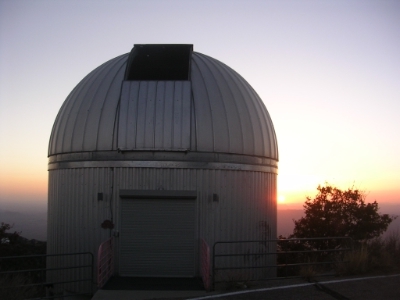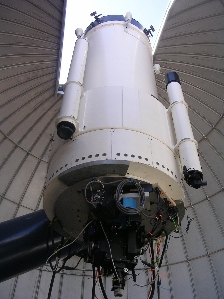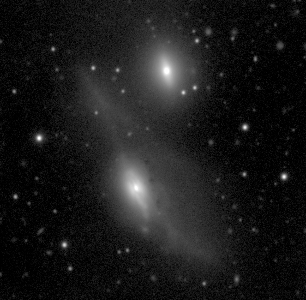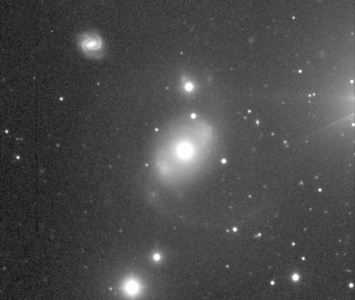



The University of Alabama recently (2006) joined the Southeastern Association for Research in Astronomy (SARA), a consortium of 10 colleges and universities which operates remote telescopes for research and instruction. The first of these was a 0.9m instrument on Kitt Peak, constructed from (the worst) parts of the two such telescopes originally operated by the national observatory, and made available after one telescope was replaced by the 3.5m WIYN telescope. Regular operation uses standard Internet tools, allowing operation of the telescope and either of two CCD imagers. UA use has involved galaxy structures, active galactic nuclei, and teaching at both graduate and undergraduate levels.
Here are some sample images from the SARA 0.9m, using an Apogee U42 CCD. The galaxy pair NGC 4435/8 in the Virgo cluster is a good exmaple of the kind of hyperbolic flyby which is most common in rich environments; the galaxies won't merge, instead producing transient tidal disturbance in the larger disk. This is an instance of what has been termed galaxy harrassment. NGC 4151 is a well-known Seyfert galaxy, the prototype of type 1 Seyferts (more). This image starts to show the faint, filamentary outer spiral pattern which encircles the bright, more amorphous inner structure.


SARA is expanding its operations in 2007, refurbishing and beginning operation of a 0.6-meter telescope at Cerro Tololo. Originally set up by Lowell Observatory for planetary observations, this telescope yields excellent images, and we look forward to having access to the southern skies. It is also easier to use a telescope to one's east, as sundown and sunrise both happen earlier rather than later.
Last changes: 4/2007 © 2007